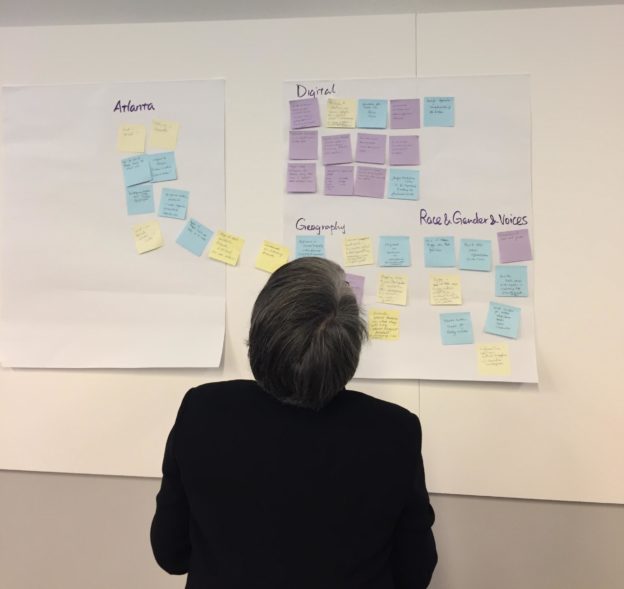European dried gardens and women writers imagining Atlanta were the fascinating topics that were the focus of a double-header Publishing Makerspace workshop at Emory University (November 2, 2017). Understanding the multi-functional collaboration that is at the heart of Publishing Makerspace, Allison Adams (Associate Director, Scholarly Writing and Research, Center for Faculty Development and Excellence) and Sarah McKee (Senior Associate Director for Publishing, The Bill & Carol Fox Center for Humanistic Inquiry) invited a terrific group of scholars, librarians, technologists, and an editor from the University of Georgia Press to participate in visioning the future of the two projects: (1) María Carrión’s Planted Knowledge: Natural History and Philosophy in 16th-Century European Dried Gardens and (2) Molly McGehee’s Margaret Mitchell’s Grave: Women Writers Imagining Atlanta. Both projects had the potential to become multi-modal publications with both print and digital components.
I was honored to facilitate a Publishing Makerspace workshop solo for the first time, following co-founder David Phillips’ design-charrette technique. I divided the sizeable group of 20 into three teams, which simultaneously followed our design charrette process and then shared their ideas with each other. I also gave a talk the previous day called “Creative Collaboration in the Humanities,” an excellent opportunity to summarize various applicable experiences over (gasp) decades. (For better or for worse, here is the video.)
What are “dried gardens”? The answer is as intriguing as the term. They are centuries-old scrapbooks of plant specimens–not the intricate drawings one might expect of stems, leaves, and flowers but rather cuttings from the actual plants. Carrión rediscovered a set of these amazing volumes in the basement of an archive in Spain and subsequently located 32 such collections in Europe. One of the many challenges of her publishing project is how to represent the startling visual and tactile elements of these very fragile volumes.
McGehee’s project inspired so many intersecting ideas about digital mapping and potential audiences–who might be interested in Southern writers, women writers, feminism, Southern history, Atlanta, geography, race, and urbanism–that her challenge was going to be how to sort and prioritize them.
I look forward to hearing about how these two authors have developed their projects following the workshop.
